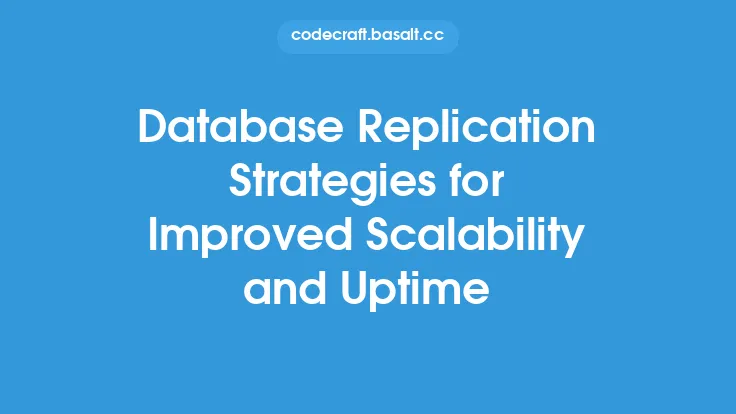When designing a database, one of the most critical aspects to consider is scalability. As the amount of data and the number of users increase, the database must be able to handle the additional load without a significant decrease in performance. Two key components that play a crucial role in achieving scalability are indexing and querying. In this article, we will delve into the scalability considerations for database indexing and querying, exploring the concepts, techniques, and best practices that can help ensure a scalable database system.
Introduction to Database Indexing
Database indexing is a technique used to improve the speed of data retrieval by providing a quick way to locate specific data. An index is a data structure that contains a copy of selected columns from a table, along with a pointer to the location of the corresponding rows in the table. Indexes can be created on one or more columns of a table, and they can be used to speed up various types of queries, including SELECT, UPDATE, and DELETE statements. However, indexes can also have a negative impact on scalability if not properly designed and maintained. As the size of the database grows, the index can become larger and more complex, leading to increased storage requirements and slower query performance.
Querying and Scalability
Querying is the process of retrieving data from a database, and it is a critical component of any database system. As the database grows, the number of queries and the complexity of those queries can increase, leading to scalability issues. There are several factors that can impact the scalability of querying, including the type of queries being executed, the size of the result sets, and the frequency of queries. To achieve scalability, it is essential to optimize queries to reduce the amount of data being retrieved and to minimize the number of queries being executed. This can be achieved through techniques such as query optimization, caching, and materialized views.
Indexing Techniques for Scalability
There are several indexing techniques that can help improve scalability, including:
- B-tree indexing: B-tree indexing is a self-balancing search tree data structure that keeps data sorted and allows search, insert, and delete operations in logarithmic time. B-tree indexing is suitable for large datasets and can handle high concurrency.
- Hash indexing: Hash indexing uses a hash function to map keys to specific locations in an index. Hash indexing is suitable for equality searches and can provide fast lookup times.
- Full-text indexing: Full-text indexing is used to index large amounts of unstructured data, such as text documents. Full-text indexing allows for fast searching and retrieval of data based on keywords and phrases.
- Partitioning: Partitioning involves dividing a large table into smaller, more manageable pieces based on a specific criteria, such as date or region. Partitioning can improve query performance and reduce storage requirements.
Query Optimization Techniques
Query optimization is the process of analyzing and improving the performance of queries. There are several query optimization techniques that can help improve scalability, including:
- Query rewriting: Query rewriting involves rewriting a query to reduce the amount of data being retrieved or to minimize the number of queries being executed.
- Index selection: Index selection involves selecting the most appropriate index for a query to improve performance.
- Join ordering: Join ordering involves optimizing the order in which tables are joined to reduce the amount of data being retrieved.
- Caching: Caching involves storing frequently accessed data in memory to reduce the number of queries being executed.
Best Practices for Scalable Database Indexing and Querying
To achieve scalable database indexing and querying, it is essential to follow best practices, including:
- Monitor and analyze query performance: Monitor and analyze query performance to identify bottlenecks and areas for improvement.
- Optimize queries: Optimize queries to reduce the amount of data being retrieved and to minimize the number of queries being executed.
- Use appropriate indexing techniques: Use appropriate indexing techniques, such as B-tree indexing or hash indexing, to improve query performance.
- Partition large tables: Partition large tables to improve query performance and reduce storage requirements.
- Use caching and materialized views: Use caching and materialized views to reduce the number of queries being executed and to improve query performance.
Conclusion
Scalability is a critical aspect of database design, and indexing and querying are two key components that play a crucial role in achieving scalability. By understanding the concepts, techniques, and best practices outlined in this article, database administrators and developers can design and implement scalable database indexing and querying systems that can handle increasing amounts of data and user traffic. Remember, scalability is an ongoing process that requires continuous monitoring and optimization to ensure that the database system can handle the demands of a growing application.





